My digital painting class is going really well! It’s been a real challenge to keep up with it, since I have way less artistic experience than most of the students. But I’ve been plugging away at the exercises, and my first major project turned out fantastic! Here it is:
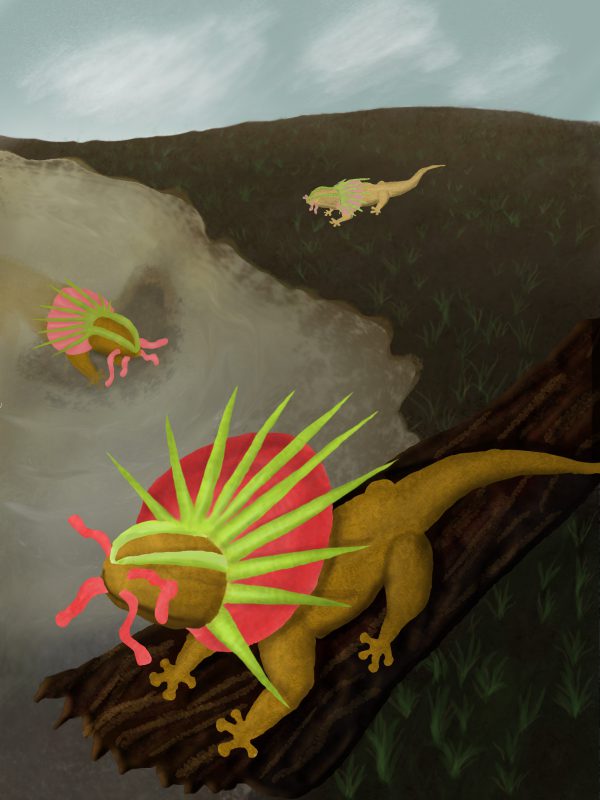
A brief bit of salamander biology: The sonic salamander is a giant salamander (about the size of a medium to large dog) that lives primarily in muddy pools, though it can venture out on land as well. Because it lives in muddy water most of the time, it doesn’t have eyes; instead, it “sees” by sonar. It has four tentacles around its mouth that (like a catfish’s barbs) help it sense prey swimming in the water. The tentacles also help it grasp slippery prey animals such as worms and small fish.
Because the muddy waters are frequently anoxic, the sonic salamander has a frill around its neck that helps absorb oxygen from the water. Normally the frill lies flat around the neck, but when the salamander feels threatened, it erects the frill with a rush of blood, turning the frill brilliant red and also splaying out the yellow-green, venomous spines that protect the salamander from predators.
This is where I was on June 6, the last time I blogged about this project:
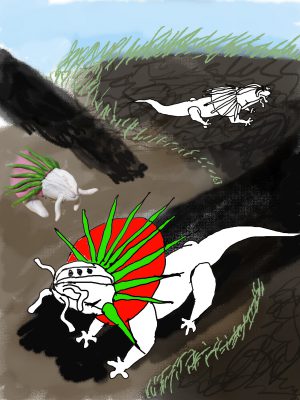
I had no idea how to get from here to a finished painting, however. I spent four long days in a state of continuous panic. I couldn’t possibly do this! because I had absolutely no idea what I was doing. But there is a wonderfully focusing thing about a deadline: it gets you up off your ass. You have to do something, whether or not you have any clue. So I jumped off the cliff, and here’s where I was on Friday night, four days before the painting was due:
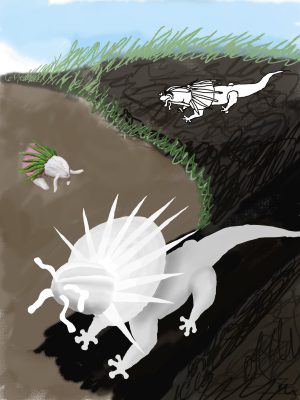
As you can see, it’s basically the rough sketch, but with the outlines eliminated and with a bit of shading. A little bit of progress, but not much.
On Saturday morning I was starting to despair completely, especially after realizing that I would have to throw away the entire background. But I worked at it for several hours, and finally managed to colorize the salamander and lay out the basic structure of the piece.
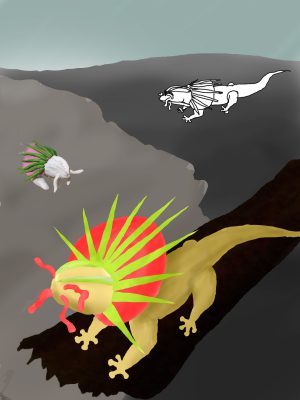
After that I got stuck. I had no idea what to do with the salamander. But I had to do something – the project was due in three days! So I decided to work on something easier. We’d learned some techniques for making rocks seem three-dimensional, so I applied those techniques on the log. To my utter surprise, it worked! Behold the magic log:
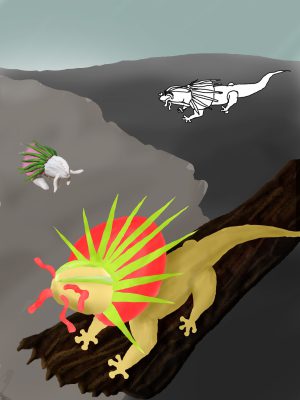
This gave me some hope that I might be able to salvage the project. So I sat down and thought about the salamander. Eventually I came up with some custom Photoshop brushes for the skin and the spines, and added some shading to make it three-dimensional. Hot dawg! It was working.
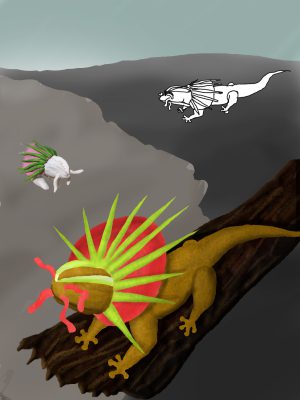
Next up was adding dirt, grass, and muddy water. The tricky part turned out to be the mud. I had to put in ripples in the water, and reflections of the sky. Many agonizingly unsuccessful experiments as the clock ticked on. More custom Photoshop brushes, more Undo commands, more Smudge and Blur tools to smear things around. Much banging of head against the wall. But I finally arrived at some mud I liked:
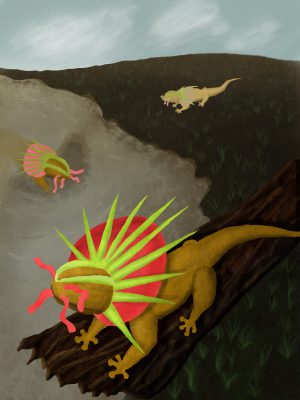
Today was the critique session for the finished project. I was pleasantly surprised to discover that my salamanders were actually about the middle of the pack in sophistication of design and execution. I had been feeling somewhat intimidated by my lack of experience, but it seems I can keep up! I got some suggestions from the professor and some of my fellow students, and applied them in the final piece, as shown at the start of this post:
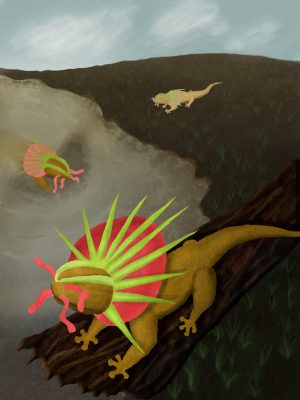
I’m feeling really encouraged about this, and am looking forward to the rest of the class.
And outside of class? Well, I’ve spun some more yarn:
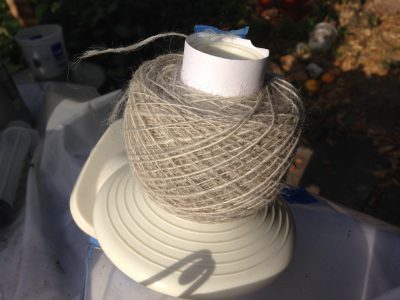 And I’ve made twenty-four pints (three gallons!) of jam and marmalade, in five varieties:
And I’ve made twenty-four pints (three gallons!) of jam and marmalade, in five varieties:
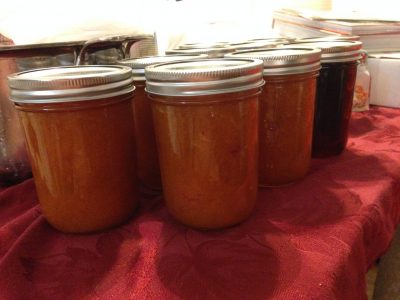

So I’m pretty pleased with my productivity.
How pleased? As happy as Fritz in the throes of a belly rub. (Ain’t no happier than that.)

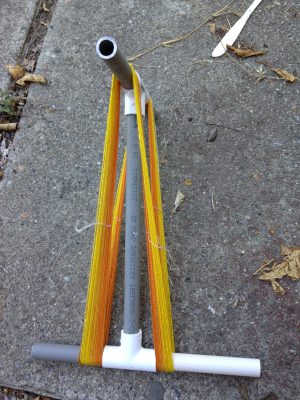

If I were your prof I’d ask you to draw the niddy noddy and skein along with shadows. Great job.